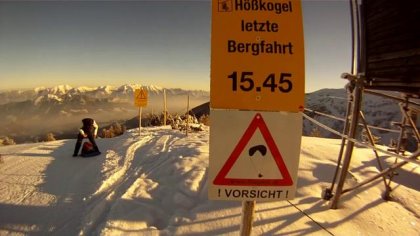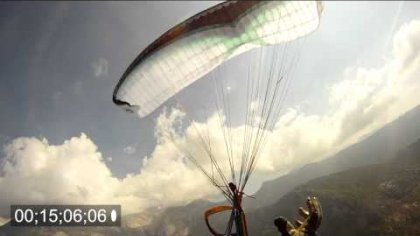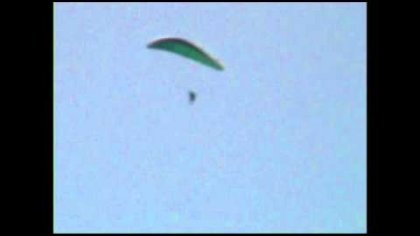19 years ago
The Asymmetric Spiral is actually a Wing-Over, but only to one side. The timing of weight shifting and braking is also pretty similar. You don’t swing up as high as in a Wing-Over, but with more energy. This is the reason, why the most powerful manouvres (such as Looping, Asymmetric SAT, Tumbling) are entered from Asymmetric Spiral.
Enter:
Start making big Wing-Overs. Once it feels good, and the timing is right, continue the movement only to one side (to the right in our case), without changing the direction of the turns:
After you pass the highest point in the last Wing-Over turn to the right, adjust a straight and symmetrical dive by weight shifting to the left. Add massive amount of brake input and weight shifting to the right at the same moment you’re straight under the glider. It will result in a very fast but not so high turn. Don’t leave your body on the right and don’t keep down the brake, only a short but impressive input is needed. After you pass the highest point and start to go down, shift your weight to the left to get a symmetrical, straight dive again. Than right brake and extremely weight shift on the lowest point to the right and so on…
The differences between the timing of a Wing-Over and an Asymmetric Spiral:
In a Wing-Over you start weight shifting way before the lowest point, and pull the brake at, or close to the lowest point.
In an Asymmetric Spiral you pull the brake and shift your weight at the same moment at, or close to the lowest point (it depends how dynamic/high Asymmetric Spiral you want to built up).
In a Wing-Over after you start another turn you leave your body on the side, and keep down the brakes. By this you lead the way of the turn.
In an Asymmetric Spiral to start another turn you just give an impressive input to the glider by a short but hard braking and extreme weight shifting. At the moment the turn started, you release the brake and shift your body back to the center.
Or
Perform a SAT to the right. Lead it out quickly and shift your weight to the left to get a straight dive. On the lowest point brake and maximum weight shift to the right…(from here same as above).
If you want to enter another manouvre from Asymmetric Spiral which needs lot’s of energy (like Looping, Asymmetric SAT, etc.), start weight shifting and braking before you reach the lowest point. By this the asymmetric turn won’t be so high, but more dynamic.
Due to the bigger momentum, you don’t need to brake on the top at all, but some gliders has the tendency to get a small tip collapse on the outer (left) side during the turns. You can prevent it by apply some left brake after you start to swing up. It’s important because you can loose lot’s of energy even by a small tip collapse
Exit:
Bleed out the energy gradually by 1-2 complete turns.
Dangers!
All dangers of Wing-Over, like collapses and cravattes, if the timing is bad.







